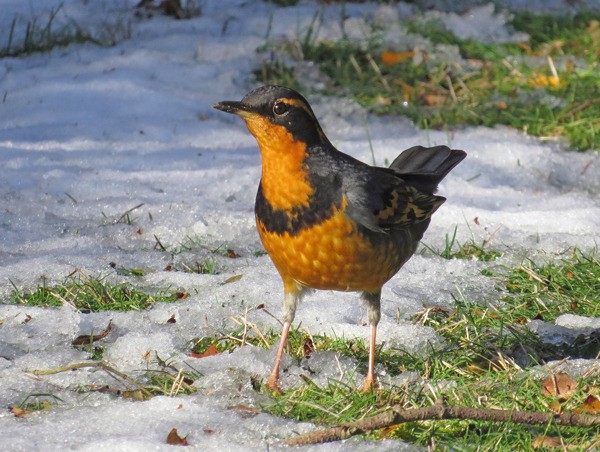Golly, it’s cold outside as I write this.
My friend John asked the other day, “How do the hummingbirds manage? We keep our sugar water feeder thawed the best we can, but how do they survive these cold nights?”
John is feeding the Anna’s hummingbird, one of two species that we see here on Whidbey and the only hummingbird that spends the winter with us. In fact, this species breaks all hummingbird rules for surviving in northern climes. Many remain in southeast Alaska well into December.
At our house when the forecast predicts freezing overnight temperatures, we bring in our two hummingbird feeders and return them outside at first light. Often the birds are watching for me to deliver their breakfast and alight on the feeder before I can hook it in place.
Two physiological adaptations help these birds survive our cold weather. First, they shiver to generate heat, like us humans.
Second, they go into a state of torpidity to conserve energy. At night, hummingbirds reduce their metabolism to about 1/50th the customary rate. Normal heart rate for a hummingbird can be as high as 1200 beats per minute. While torpid, their heart rate drops to around 100 beats per minute. Their breathing slows way down and even stops for long periods. Torpidity can last one night or extend over a couple days.
In 1861, British artist John Gould described torpid hummingbirds: “[They] showed … no spark of life; they could be moved about and laid on a table like so many dried [bird] skins.”
Not only the hummingbirds appreciate our help. I keep my suet and thistle seed feeders topped off during these periods when snow covers the ground. Chickadees, juncos, sparrows and especially downy and hairy woodpeckers provide a steady stream of visitors to my feeders. The recent snow brought a red-breasted nuthatch to my suet for the first time this season.
Two new bird species arrive, which we usually don’t see during warm weather. Watch for varied thrushes mixed in with the robins feasting on the madrona tree berries, or feeding along roadsides. On my walks I listen for a sharp “tisk” emitted from thick understory and try to locate the fox sparrow lurking below.
Birds also need fresh water for drinking. Recently I watched a northern flicker chopping the solid ice that had formed in my birdbath. Using its chisel beak, the bird banged away hoping to break through to find water below.
As small ponds and wetlands freeze, many of our fresh water ducks will head out to the salt water. Look for them huddled around fresh water outfalls such as streams and ditches.
Over Thanksgiving weekend, several of us braved the below-freezing weather to conduct a shorebird survey on some of the island’s wetlands. I was assigned to a team that identified and counted all the dunlin, plovers, sanderlings, and sandpipers at Deer Lagoon.
A flock of over 2,000 dunlin feed on these tidelands and shorelines. When startled, often by raptors such as bald eagles or harriers, those tiny shorebirds take off in a cloud and circle above the bay.
It’s just one example of the fabulous winter birding right here on South Whidbey.
But the real, world-class birding at this time of year is watching the wintering snow geese and swans on the Skagit Flats. When the roads clear of ice and driving is easy again, treat yourself to tens of thousands of those birds. Huge flocks of snow geese peck at the fallow fields, lift as one wondrous cackling cloud and swarm through the air before settling back to the ground.
Even with the snow melted, they blanket the fields in white.
Frances Wood can be reached at wood@whidbey.com. Craig Johnson is at Craigjohnson@whidbey.com.


